This excerpt is adapted from The Healthy Brain Solution for Women Over Forty: 7 Keys to Staying Sharp—On or Off Hormones, the latest book by bestselling author and renowned integrated medicine expert Dr. Nancy Lonsdorf. She has treated over 25,000 patients holistically by combining Maharishi AyurVeda®, a modern revival of the natural health practice from ancient India, with the tools of modern medicine. The following selections are from Chapter 6, “Balance Your Hormones, Rejuvenate Your Brain.” See Dr. Lonsdorf’s book for complete recommendations and guidelines.
As a woman over 40, and possibly decades older, you may have a brain that’s aging faster than that of a man your age. Shocking news? Yes, indeed!
In fact, this recent finding is the main reason this book is here now.
Neuroscientist Lisa Mosconi and colleagues found that women going through perimenopause and menopause show accelerated brain aging as compared to men of the same age.1
They reported that after hormonal shifts set in, women’s brain metabolism slowed down—an early sign of neuronal stress. In addition, deposits of the memory-destroying protein “A-beta,” aka amyloid, increased. And, eventually, greater shrinkage was seen in key memory and cognition areas of the brain.
These findings clearly suggest hormonal factors as an important contributor to women’s 100 percent greater risk of Alzheimer’s disease.
The question is, “What’s a woman to do?” Does this mean every woman should take estrogen to prevent Alzheimer’s?
Should You Take Hormones or Not?
When I first learned of this research, I found it very disconcerting. I had spent the past two decades preaching the findings of the Women’s Health Initiative study, which concluded that the risks of hormone replacement therapy (HRT) outweigh the benefits.2
I am deeply committed to the wisdom of natural therapies, including Maharishi AyurVeda®, that philosophically hold that nature has “programmed” our bodies for good health. And I am still convinced that nature did not intend for us to deteriorate and wither after menopause, but to live fully healthy, vital, and fulfilling lives for many more decades. In an ideal world, we would make enough hormones to keep our brains healthy, even after menopause.
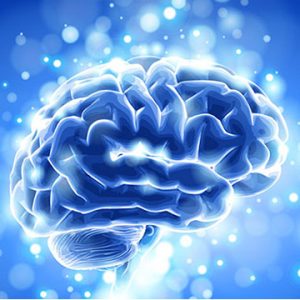
There are many ways besides taking hormones to support cognition and prevent Alzheimer’s
However, we don’t live in an ideal world, and healthy midlife brains are not what brain scans of perimenopausal and postmenopausal women show today.
Many questions remain, but one question has been settled quite confidently: Bioidentical hormones (which exactly match the human body’s own hormones) are associated with fewer side-effects than the type of hormones used in the Women’s Health Initiative study. Bioidentical hormone replacement therapy (BHRT) is now the recommended form of hormone replacement therapy due to its lower risk profile.
My book reviews the latest in
- the research on hormone therapy;
- how to get your hormone levels measured;
- the various bioidentical hormone replacement therapy (BHRT) options available for women;
- when taking estrogen might help your memory;
- if there’s an optimal window of opportunity and a time to stop BHRT;
- and much more.
Thankfully, there are many approaches besides taking hormones to support cognition and prevent Alzheimer’s. In this excerpt, I will describe many natural ways you can enhance and protect your memory and cognition if you prefer to avoid hormones, or if taking hormones is not an option for you.
We’ll delve into the details of these lifestyle approaches that can add joy to your life, support your vitality, and fortify your brain, with or without the additional support of HRT or BHRT.
Nature did not intend for us to deteriorate and wither after menopause, but to live fully healthy, vital, and fulfilling lives for many more decades.
A Natural Approach to Hormone Balancing
It is not necessary for everyone to take hormones for prevention, especially if you don’t have cognitive decline, hot flashes, or any other symptoms. In every case, I recommend women incorporate the natural approach that Maharishi AyurVeda prescribes, with herbs, diet, and proper lifestyle based on your mind-body type or Dosha—regardless of your chosen interventions.
This approach provides a unique angle on healing that no other approach can replace. For more information on Maharishi AyurVeda programs and expert assistance on determing your mind-body type, visit Maharishi-AyurVeda.
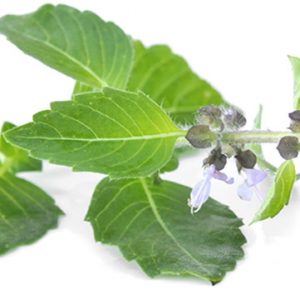
Ashwagandha leaves
According to Maharishi AyurVeda, two of the best herbs for women are shatavari (Asparagus racemosus) and ashwagandha (Withania somnifera).
Shatavari has been shown to attach to receptors for the bioidentical hormone estradiol, and is demonstrated to have pro-estrogenic effects. This is helpful for women, because estrogen decreases during perimenopause and menopause. Interestingly, shatavari has also been shown to inhibit breast cancer growth, normally considered to be fueled by estrogenic substances. As is the case with most plant-based estrogens, shatavari’s action is not one-dimensional, as drugs tend to be, but more complex, with balance being the rule.3
For example, while shatavari may stimulate certain estradiol receptors, it has also been shown to inhibit other estrogen receptors, potentially lowering breast-cancer risk. Shatavari also helps to curb heavy menstrual bleeding, commonly attributable to excess estrogen.
From the perspective of Maharishi AyurVeda, shatavari is both Vata- and Pitta-pacifying (i.e., calming and cooling). Available in tablet form, you can start with one tablet (500 mg) twice a day. You may take up to two tablets twice a day, if needed, for greater effects.
I recommend women incorporate the natural approach that Maharishi AyurVeda prescribes, with herbs, diet, and proper lifestyle based on your mind-body type or Dosha—regardless of your chosen interventions.
Ashwagandha is an “adaptogen” herb, which means it helps the body cope with stress. It has also been shown to directly inhibit amyloid production and support neuron regeneration and healing.4 Ashwagandha is very Vata-balancing (calming and strengthening for nerves and hormones), both for women and men.
For more information on Maharishi AyurVeda products, visit Maharishi-AyurVeda. Both shatavari and ashwagandha are available there.
Rest and Exercise = Restore and Strengthen
Research shows that maintaining balanced hormones, reducing stress levels, properly nourishing your body and brain, and getting your blood pumping through exercise can go a long way toward keeping your brain healthy and your memory vital for a lifetime.5 Let’s take a closer look at how our lifestyle can benefit our brains, and identify the most important actions to adopt and maintain over time.
Cycles of Rest and Activity
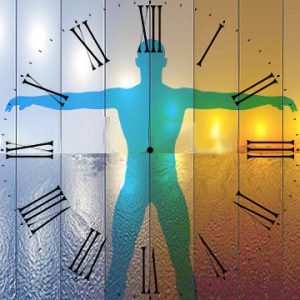
According to Ayurveda, our bodies follow a rhythmic, 24-hour cycle of metabolic and hormonal activity
Sleep, diet, and balance of life are the three pillars of health, according to the ancient texts of Ayurveda. Maharishi AyurVeda is the modern revival of this traditional health system and includes the Transcendental Meditation® (TM®) technique to develop the deepest value of mind—consciousness—which is the foundation for balancing the body.
Ayurvedic Rishis (“seers” credited with directly intuiting the laws of nature governing health) deeply understood the principles of healing with regard to diet, herbs, and lifestyle. They knew that our bodies follow a rhythmic, 24-hour cycle of metabolic, hormonal, and physiological activity, and that our health depends on aligning our daily routine to match nature’s inner and outer rhythms.
In short, Maharishi AyurVeda makes three key lifestyle recommendations for good health:
- Go to sleep by 10:00 p.m.
- Eat your main meal by 1:00 p.m.
- Exercise between 6:00 and 10:00 in the morning or evening.
Sleep, diet, and balance of life are the three pillars of health, according to the ancient texts of Ayurveda.
Tips for a Good Night’s Sleep
We don’t need medical research to know that sleep matters for our health and our brains. We all notice how much better we feel and perform when we have had a good night’s sleep.
Mounting evidence, indeed, points to a connection between sleep quantity and cognitive function. When we don’t get enough sleep, our ability to recall details is impaired, as is reaction time and our ability to think clearly. Problem-solving ability also suffers. Poor sleep raises levels of cortisol, the stress hormone, weakens the immune system, and sadly, accelerates aging.5
Schedule and Environment

Keep a consistent schedule, ideally going to bed by 10:00 p.m.
Keep a consistent sleep schedule, ideally going to bed by 10:00 p.m. Get up at the same time every day (ideally by 6:00 a.m.), even on weekends or during vacations.
Make your bedroom quiet and relaxing. Turn off your Wi-Fi at night, if you can, and all electronic devices, including TV and phone, at least 30 minutes before bedtime. Keep the TV out of your bedroom.
Keep your bedroom at a comfortable, cool temperature, and block light from the windows as much as possible.
Do not work in your bedroom, if at all possible. Use your bedroom for sleep.
Establish a relaxing bedtime routine. Avoid vigorous exercise too close to bedtime. Instead, take a brief, leisurely walk followed by a relaxing bath when you can.
Limit exposure to bright light in the evenings, and cut blue light at night. Get one of the popular apps now available that promise better sleep by filtering out the blue light produced by smart phones, tablets, computers, and even televisions. Alternatively, try blue-light–blocking glasses in the evening.
Diet, Supplements, Massage
Your brain naturally produces the hormone melatonin at night but only if it is dark. If you are exposed to light, especially blue light, in the evening, melatonin production is inhibited. As melatonin production tends to decline with age, many people get better sleep by taking 0.5 mg to 1 mg of melatonin at bedtime. This lower dose is recommended by many integrative physicians, rather than the more common high dose pills, as the lower dose more closely approximates your body’s own production.
Avoid caffeine in the late afternoon or evening.
Avoid drinking alcohol before bedtime. While alcohol can help some women feel sleepy, it is toxic to neurons, interferes with sleeping through the night, and can trigger more hot flashes.
Reduce your fluid intake before bedtime so that you don’t wake up in the middle of the night for a bathroom run.
Eat your dinner by 7:00 p.m. at the latest. Eating early improves sleep and also helps prevent joint pains and sinus congestion. Eat a light, easy-to-digest meal for dinner.

To help calm the “monkey mind” before bed, massage coconut oil onto your scalp and the soles of your feet
Don’t eat for 3 hours before going to bed. A reminder: This short period of fasting will start the brain’s built-in system for cleaning house called autophagy (literally “self-eating”). Your cells create membranous vesicles called autophagosomes that seek out dead, diseased, or worn-out cell parts and metabolic wastes. They gobble them up, strip them for parts, and use the resulting molecules for energy or to make new cell parts. Our own internal recycling system!
At bedtime, you may want to apply a little coconut oil to your scalp and/or the soles of your feet. Amazingly, this simple practice can calm your nerves and help you settle down to sleep. Rub the coconut oil in your hands to melt it, then slip the palm of your hand underneath your hair to apply directly to your scalp. Massaging oil into your scalp and the soles of your feet at bedtime can be a surprisingly relaxing and fast-acting cure for a sleep-busting “monkey-mind.”
The Gifts of Exercise
There are two main points worth knowing about exercise and your brain.
First of all, all three major forms of exercise are all effective, with each yielding its own respective profile of benefits:
1. Continuous aerobic (steady pace)
2. High-intensity interval training or “HIIT” (alternating fast and slow aerobic)
3. Resistance training (lifting weights, etc.)
In one recent comparative study, researchers Coetsee and Terblanche6 found that resistance training and continuous aerobic activity resulted in the greatest gains for executive function (attention, planning, and self-regulation tasks), while high-intensity interval training resulted in greater physical endurance, as well as faster brain-processing speed.
It’s interesting that practicing intervals of “all out, as fast as you can” sprinting translates into ever faster “fast as you can” brain speed!
Exercise—How Much?
Fortunately, we now have a simple answer to this question. Researchers Joyce Gomes-Osman et al. surveyed 98 different studies on exercise and cognition.7 What they found is very straightforward: Cognitive improvements occurred across all exercise types and timings when participants exercised at least 52 hours over a six-month period. That means about 2 hours per week on average.
The number of minutes in each exercise session, the number of minutes exercising each week, and the frequency of sessions were not significant factors—only the total exercise hours over the six-month period mattered.
In their review, cognitive benefits were associated with all three types of exercise—aerobic, resistance/strength training, and “mind-body” exercises such as Yoga—in the areas of global cognitive functioning, executive functioning, and processing speed/attention.
Cognitive improvements occurred across all exercise types and timings when participants exercised at least 52 hours over a six-month period. That means about 2 hours per week on average.
For more exercise tips and the benefits of a morning “power walk,” see Chapter 6 and also my previous article and video.
Uncomfortable News about Armchair Living: Sitting and Your Brain
Researchers at the University of California, Los Angeles (UCLA) recently found that long stretches of sedentary behavior—like sitting all day at your desk—are linked to thinning of brain regions associated with memory, a frequent finding that precedes and coincides with cognitive decline, dementia, or Alzheimer’s.8

An hour of cycling-type exercise in the evening can offset a sedentary day
Even before Alzheimer’s disease steals memories, the condition starts to shrink the hippocampus and the entorhinal cortex, brain regions that lie at the heart of memory function. More research is needed to see whether increasing exercise alone can restore volume in these key memory areas of the brain.
Even if subjects continued to sit all day but added one hour of moderate to vigorous cycling-type exercise in the evening, cardiovascular markers such as endothelial function improved within days.
It is encouraging, bordering on miraculous, to see that the body responds so quickly to our lifestyle—epigenetics in action—that even in the first few days of sitting less, your body already begins to get healthier!9
If you have a desk job, I recommend that you do everything you can to counteract the effects of sitting for long periods of time. Get up and walk to the restroom, down the hall, or anywhere for 5 minutes every half hour or so. Unlikely to break so frequently? Opt for a standing desk and gradually work up to standing at least 4 or 5 hours of your day, plus walk around, even a bit, every time you can take a break.
See Chapter 6 of my book for more about how exercise boosts the “anti-aging” Human Growth Hormone (HGH) and how “Weights Are for Women!”
Manage Your Stress, Enjoy Your Life
The body is designed to handle intermittent stress. However, when stress becomes chronic, excess cortisol can damage the memory centers of the brain, especially the hippocampus. Memory, long-term recall, and learning suffer. Chronic stress is a factor in most forms of cognitive decline and has been observed clinically to play an important role in Type 3 (toxic) Alzheimer’s disease.

Stress reduction measures help maintain healthy brain cells and optimize cognition
Late nights, lack of sleep, skipping or delaying meals, worry, fear, anger, and excessive exercise all contribute to chronic stress. Alcohol consumption, tobacco usage, high fat, a rich diet, lack of exercise, sleep deprivation, excessive caffeine (four or more cups a day) only add insult to injury, exacerbating the negative impact of stress.
Add to that the effects of fluctuating hormones on the female brain during perimenopause, and the need for truly effective stress relievers become self-evident. That is why stress reduction measures are critical to maintaining healthy brain cells and optimizing our cognition.
Stress reduction measures are critical to maintaining healthy brain cells and optimizing our cognition.
The Maharishi AyurVeda Approach to Managing Stress: Regular TM Practice
Among the many ways to reduce stress, I have found the Transcendental Meditation technique to be the all-around most effective for my patients. Even a more balanced daily routine, which can dramatically improve health, rarely produces the magnitude of response I routinely hear when patients learn the TM technique and report their experience.
“TM changed my life,” with a big sigh of relief, is the most common sentence I hear.

Regular TM practice dissolves stress and nurtures the physiology from within
Indeed, transformations, including reduction or cessation of alcohol, drugs, and other addictions, are common. Better sleep; relief from chronic headaches, PMS, arthritis pain, and other health problems; less anxiety; and smoother relationships with family and co-workers are also frequently reported. I’ve heard many times from grateful patients that “things just don’t get to me the way they used to.”
Thousands of my patients have learned TM, and I’ve had the pleasure of seeing how it nurtures them from within, dissolves their stress, and supports their healing journey in a multitude of ways.
Since 1970, the National Institutes of Health in the United States have funded over $20 million of research studies on the Transcendental Meditation technique, and hundreds of peer-reviewed studies have documented its benefits.
Findings include lower blood pressure, reduced insulin resistance and metabolic syndrome, enhanced longevity, reduced anxiety, reversal of atherosclerosis, and a 48-percent reduction in mortality, heart attacks, and stroke in high-risk cardiac patients.
Relevant to stress-reduction and brain health, studies have demonstrated lower cortisol, reduced PTSD and ADHD, and improved memory, learning, and brain wave coherence, a finding associated with a wide variety of psychosocial and behavioral benefits. (See a wide selection of TM research here.)
Most importantly, the TM technique is easy to learn and practice. It doesn’t take a lot of time to “get good at it.” For the best results, I recommend regular, twice-daily practice, whenever possible.
“TM changed my life,” with a big sigh of relief, is the most common sentence I hear.
To find a TM teacher and Center near you, visit TM.org or EnjoyTM.org.
From Senior Moments to Greater Insight and Enjoyment
Learning any new thing is also a proven way to keep your mind alert and counteract the effects of cognitive decline. You can learn a new language, to dance or play a musical instrument, start a new hobby, etc.
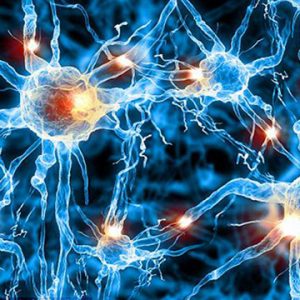
Nourish and flex your brain cells on a daily basis
In summary, to promote growth of your brain cells, cognitive skills, and memory, you need to reduce your stress level, challenge your brain regularly by learning new things, and yet also give your brain some deep rest and rejuvenation.
Focus on your quality of sleep; stress management habits such as Transcendental Meditation; physical exercise and mental “calisthenics;” and proper organic, whole food and supplements, spices, and herbs to help nourish and flex your brain cells on a daily basis.
In time, you’ll find your senior moments transforming into flashes of deeper insight and creativity, inner wisdom, and greater enjoyment of life.
Reduce your stress level, challenge your brain regularly by learning new things, and also give your brain some deep rest and rejuvenation.
Next Steps
If you enjoyed this selection and would like to learn more, order a copy of The Healthy Brain Solution for Women Over Forty. It is designed to empower you with the know-how to prevent, stop, and turn around memory loss in yourself and those you love.
You will learn about
- The first cases of Alzheimer’s reversal ever, including regrowth of the memory centers of the brain
- How to apply those same verified healing methods in your life
- How to discover and eliminate more than 36 identified causes of cognitive decline
- How Ayurvedic cleansing programs, including Maharishi PanchakarmaSM, can help rejuvenate the brain
- The seven essential keys to staying sharp after 40, including how to heal your gut, optimize your blood sugar, squelch inflammation, replenish vital nutrients, replenish hormones, and eliminate toxins
- And the latest research on the risks and benefits of bioidentical hormones (which match the body’s own hormones): when it’a best to start, if at all, and when to stop, if appropriate.
You can also take my interactive online course, “My Ageless BrainTM: 7 Keys to Staying Sharp,” a lively 12-episode webinar. For more information visit My Ageless Brain.
The time has arrived when we can prevent, stop, and sometimes even reverse memory loss. Through self-knowledge about our bodies and how to keep them in balance, we can create and live a lifestyle that supports healing.
Through self-knowledge about our bodies and how to keep them in balance, we can create and live a lifestyle that supports healing.
Disclaimer: Our intention is to provide general educational information. The information in this article is not intended to be personal medical advice, nor should it be used as a substitute for medical advice, diagnosis, or treatment. If you have a health condition or take medication, please consult your physician before adopting any new food supplement, exercise, or dietary recommendations. Although unlikely, if any discomfort occurs, stop the above dietary and lifestyle recommendations.
References
1. Mosconi, L, et al. Sex differences in Alzheimer risk: Brain imaging of endocrine vs chronologic aging. Neurology. 2017; Sep 26;89(13):1382-1390. dos: 10.1212/WNL.0000000000004425. Epub 2017 Aug 30.
2. Writing Group for the Women’s Health Initiative Investigators. JAMA. 2002;288(3):321-333. doi:10.1001/jama.288.3.321 Retrieved at: https://jamanetwork.com/journals/jama/fullarticle/195120.
3. Sharma R, Jaitak V. Asparagus racemosus (Shatavari) targeting estrogen receptor α: – An in-vitro and in-silico mechanistic study. Natural Product Research. 2018; Dec 22:1-4. doi: 10.1080/14786419.2018.1517123. [Epub ahead of print]
4. Rao, RV, Descamps, O, John, V, and Bredesen, DE. Ayurvedic medicinal plants for Alzheimer’s disease: a review. Alzheimer’s Research & Therapy. 2012; 4 (3), 22. http://doi.org/10.1186/alzrt125.
5. Scullin, MK, and Bliwise, DL. Sleep, cognition, and normal aging: integrating a half century of multidisciplinary research. Perspect Psychol Sci. 2015 Jan;10(1):97-137. doi: 10.1177/1745691614556680. Yaffe, C, et al. Connection between sleep and cognition in older adults. Lancet. 2014; vol. 13, iss. 10 p. 1017-1028. https://doi.org/10.1016/S1474-4422(14)70172-3.
6. Coetsee, C., and Terblanche, E. The effect of three different exercise training modalities on cognitive and physical function in a healthy older population. European Review of Aging and Physical Activity. 2017;14:13. doi:10.1186/s11556-017-0183-5.]
7. Gomes-Osman, J., et al. Exercise for cognitive brain health in aging: A systematic review for an evaluation of dose. Neurology: Clinical Practice. 2018; 8. 257-265. 10.1212/CPJ.0000000000000460.
8. Siddarth P, Burggren AC, Eyre HA, Small GW, Merrill DA. Sedentary behavior associated with reduced medial temporal lobe thickness in middle-aged and older adults. PLoS ONE. 2018; 13(4): e0195549. https://doi.org/10.1371/journal.pone.0195549.
9. Duvivier, BMFM, et al. Reducing sitting time versus adding exercise: Differential effects on biomarkers of endothelial dysfunction and metabolic risk. SCI Rep. 2018; Jun 5;8(1):8657. doi: 10.1038/s41598-018-26616-w.

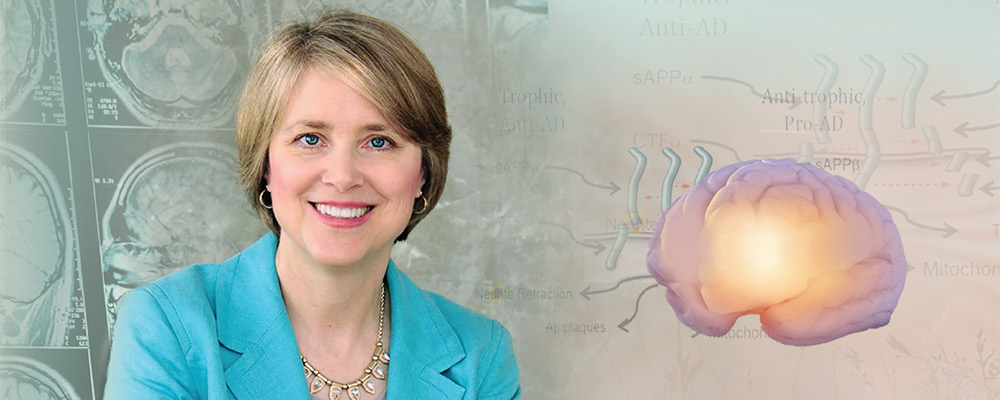
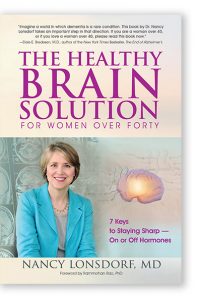
Comments
you MAY ALSO LIKE
Better Health
7 Key Ways to Sharpen Your Memory
Ever worry about blanking on a word or name? Nancy Lonsdorf, M.D., renowned Maharishi AyurVeda® expert, provides easy integrative health tools to maintain the brain, combining the best of ancient and modern approaches for a resilient mind and memory.
Better Health
How to Sync Your Day with the Rhythms of Nature | 2:42
Time your sleep, meals, and exercise with nature for maximum health and happiness. Dr. Nancy Lonsdorf, expert in Maharishi AyurVeda®, offers simple, easy-to-follow lifestyle tips from the world’s oldest system of natural healthcare.
Better Health
7 Self-Care Tips for Your Mind-Body Type
Take Dr. Nancy Lonsdorf’s Quiz for personal wellness. You'll identify your mind-body type and gain tailored guidelines for health, vitality, and growth of consciousness throughout the year.
Better Health
Take a Morning Walk to Lose Weight, Feel Great | 3:24
Tips from Maharishi AyurVeda®—and new research findings—on the best times and easiest ways to exercise for better health.